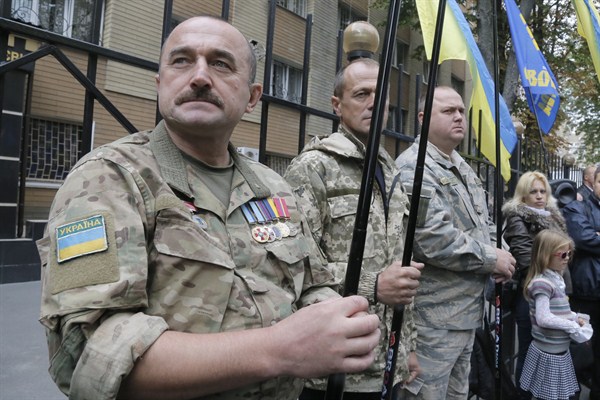While Ukraine continues to fight Russian-sponsored separatists in its eastern Donbass region, it is also facing an internal challenge equally threatening to its sovereignty: a small but powerful right-wing nationalist movement prepared to use violence to achieve its goals. If Ukraine’s pro-democracy supporters from the Maidan movement and in President Petro Poroshenko’s government don’t aggressively confront Ukraine’s ultranationalists, the far right could destroy Ukraine’s nascent democracy.
This threat became clear Sept. 1 when nationalist protesters, many from the Svoboda (Freedom) party, attacked police guarding the Rada, Ukraine’s parliament. Protesters threw bricks, Molotov cocktails and even grenades, killing three officers from Ukraine’s National Guard and wounding 140 people. Deputies had just passed a law amending the Ukrainian constitution to decentralize power to separatist-controlled regions in eastern Ukraine. Although mandated by the February cease-fire negotiated by Ukraine, Russia, France and Germany, known as Minsk II, giving more autonomy to the Donbass is controversial. Opponents argue that doing so effectively cedes sovereignty to the separatists.
While the Maidan movement’s liberal reformers do not share the far right’s extremist views, they tolerated a de facto military and political alliance of convenience from the beginning of the revolution against the regime of former President Viktor Yanukovych. Far-right groups and their images became more visible as the protest movement spread; they provided much of the muscle that prevented Yanukovych’s security forces from pushing demonstrators out of the Maidan in central Kiev. Research by Volodymyr Ischenko at the Center for Social and Labor Research in Kiev found that the far right were the most visibly identifiable groups in eastern Ukraine during the protests, antagonizing many residents there and providing fertile ground for Russian propaganda.

